Accelerating GenAI Development: Harnessing Astra DB Vector Store and Langflow for LLM-Powered Apps
Join Dieter and Michel in this session as they demonstrate how leveraging Astra DB’s vector store and Langflow can significantly expedite the development of applications powered by LLMs. This session will provide a detailed look into how these technologies streamline the creation and deployment of LLM-driven solutions, significantly speeding up development processes.
The session will start with an introduction to the vector capabilities of Astra DB, which are essential for managing the high-dimensional data demands of generative AI applications. We will then focus on how Langflow, a pioneering low-code platform, accelerates the development lifecycle of LLM-powered applications. By facilitating rapid prototyping and iteration, Langflow enables developers to reduce development time dramatically.
The theme of the demos is the implementation of a Bicycle Recommendation Service.
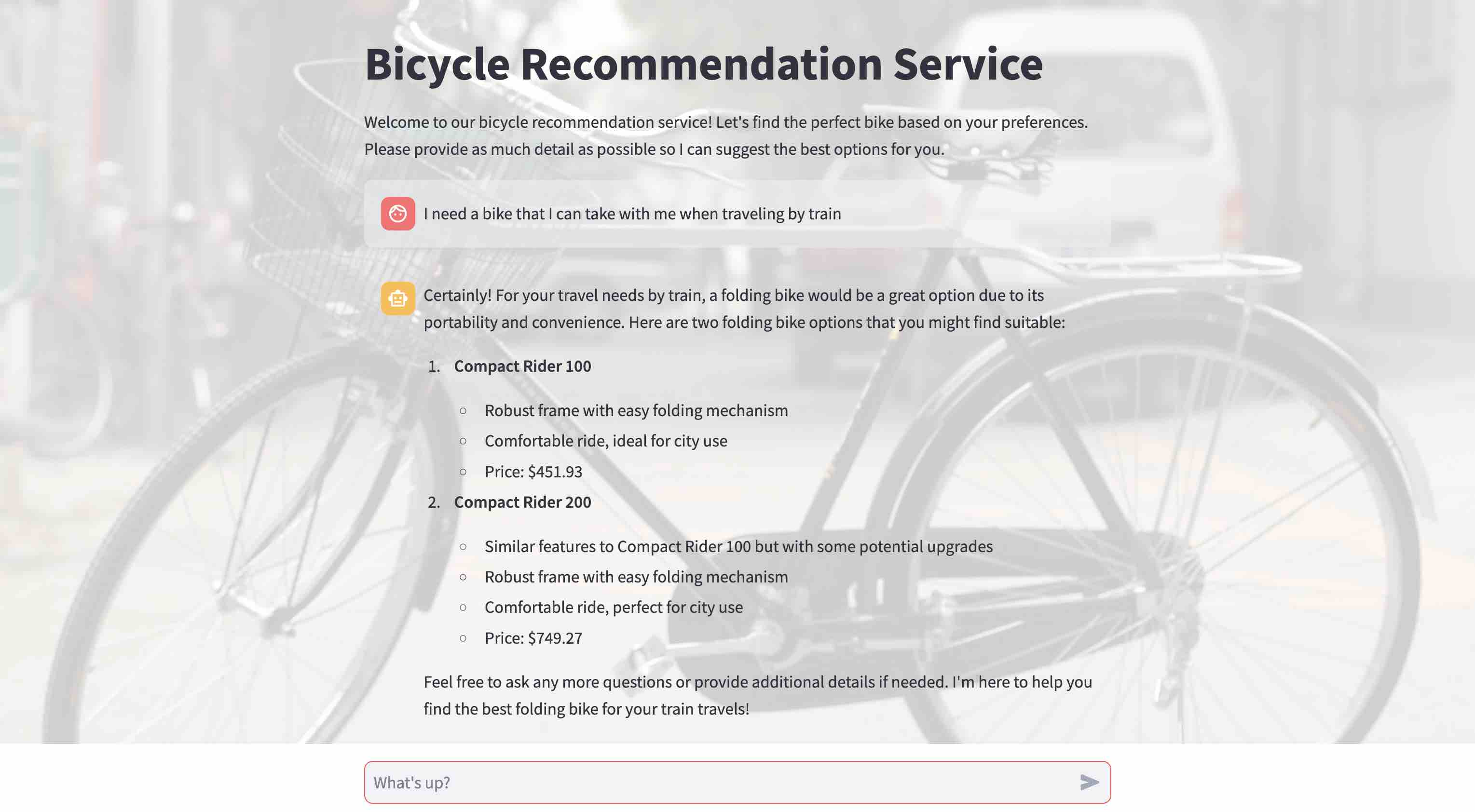 All demos use the same bicycle catalog as context data. The catalog contains 100 bicycles with the following fields:
All demos use the same bicycle catalog as context data. The catalog contains 100 bicycles with the following fields: id, bicycle_type, product_name, product_description, and price. The field product_description is the one that will be vectorized to perform a semantic search to find the perfect bike based on user preferences. The demos cover Astra DB, Astra Vectorize, RAGStack, and Langflow.
- Without vs. with RAG: Shows the impact of Retrieval-Augmented Generation (RAG) on the relevance of responses.
- Vectorize the Easy Path: Illustrates the ease of vectorizing data using Astra DB’s Vectorize capability.
- Coding Demo with RAGStack: Demonstrates the implementation of an LLM-powered application with RAGStack.
- No-Coding Demo with Langflow: Highlights the rapid development capabilities of Langflow for LLM-powered applications.
- Clone the repository:
git clone https://github.com/difli/WeAreDevelopers2024.git cd WeAreDevelopers2024 - Create a Virtual Python Environment. Use the below to set it up:
Then activate it as follows:
python3 -m venv myenvsource myenv/bin/activate # on Linux/Mac myenv\Scripts\activate.bat # on Windows - Install the required dependencies:
pip install -r ./coding/requirements.txt
- Make a copy of the
secrets.toml.exampleand name the filesecrets.toml:cp ./coding/.streamlit/secrets.toml.example ./coding/.streamlit/secrets.toml
- Ensure you have a vector-capable Astra database (get one for free at astra.datastax.com) on AWS in Region us-east-2. You will need to provide the API Endpoint, which can be found in the right pane under Database details. Ensure you have an Application Token for your database, which can be created in the right pane under Database details. Configure your connection details
ASTRA_API_ENDPOINTandASTRA_TOKENin thesecrets.tomlfile.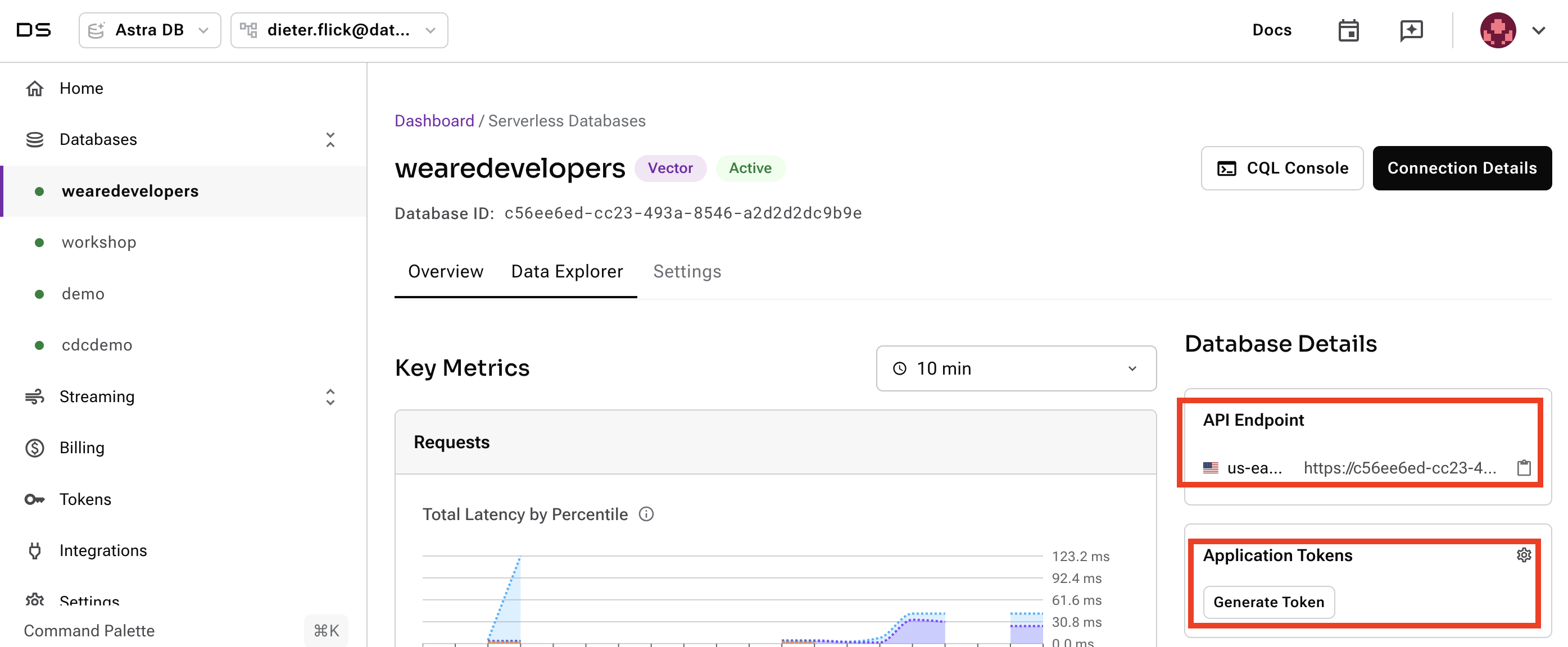
- Create an OpenAI account or sign in. Navigate to the API key page and create a new Secret Key, optionally naming the key. Configure your
OPENAI_API_KEYin thesecrets.tomlfile.
- Execute the loader.py script to create the
bicycle_catalogcollection in your Astra DB database and populate it with the bicycle catalog data. Ensure you do this within thecodingfolder of this repository:streamlit run loader.py
Let's have fun with the demos now!
This demo shows the impact of Retrieval-Augmented Generation (RAG) on the relevance of responses for LLM-powered applications.
-
Run app_without_rag.py. Ensure you are within the
codingfolder.streamlit run app_without_rag.py
-
Without RAG
- Uncheck
Enable Retrieval Augmented Generation (RAG)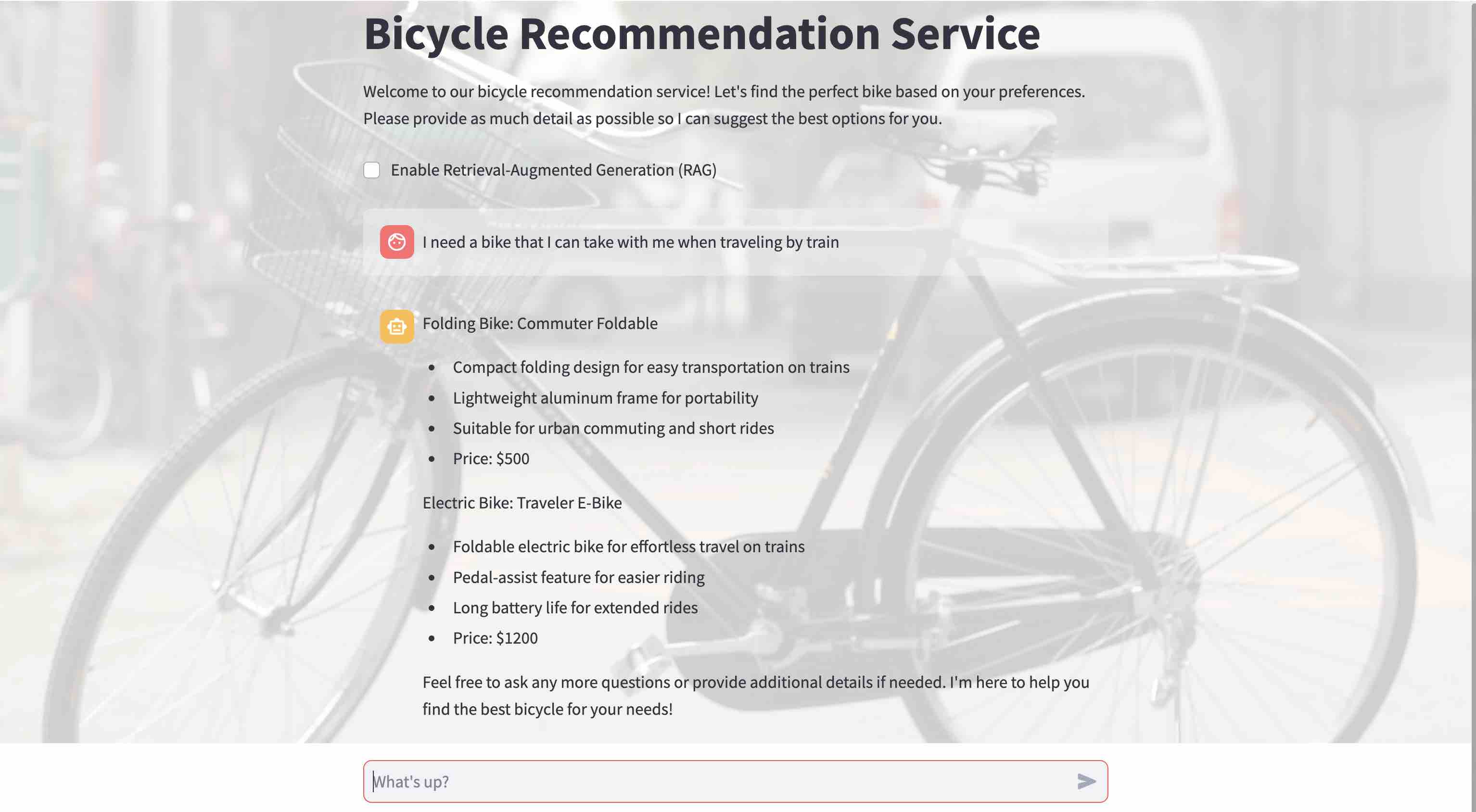
- The bicycle recommendations are
genericwithout RAG. The listed bicycles are not from our bicycle catalog. The LLM was trained on a vast amount of public data, but not with our private data. Therefore, it does not know about our catalog and cannot recommend any of our specific bikes that we have in our store and want to sell.
- Uncheck
-
With RAG
- Check
Enable Retrieval Augmented Generation (RAG)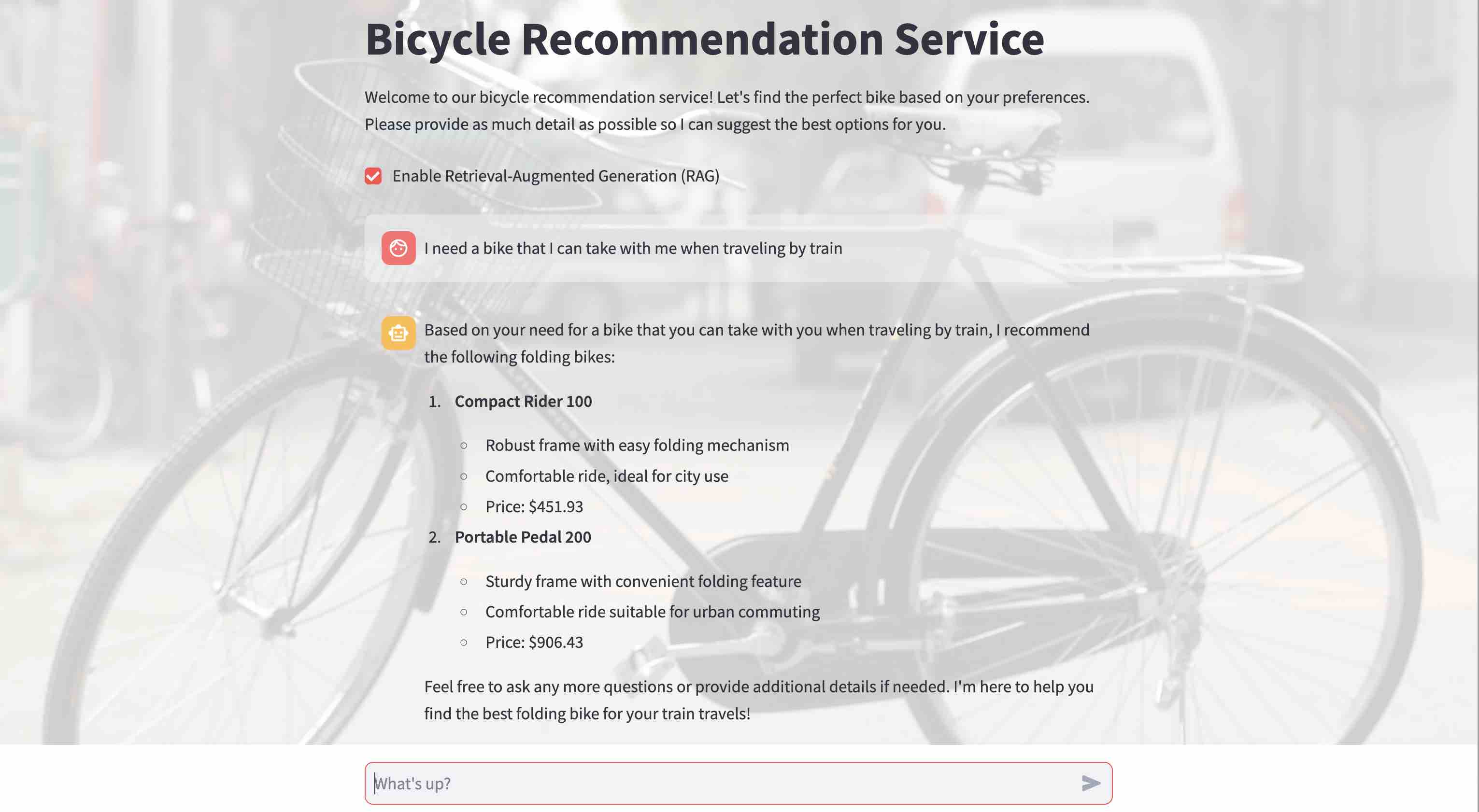
- The bicycle recommendations are
relevantwith RAG. The listed bicycles are contextually relevant and are from our bicycle catalog. While the LLM is still not trained on our data, a semantic search with Astra DB over our bicycle catalog data retrieves the relevant bikes and provides them as context to the LLM. Now, the LLM can make relevant recommendations based on the bikes we have in our store and want to sell.
- Check
This demo illustrates the ease of vectorizing data using Astra DB Vectorize.
- Create a vector-enabled collection via the Astra DB UI. Choose NVIDIA as the vector creation method. This service is hosted on the Astra DB platform side by side with your data, ensuring the fastest performance and low cost to vectorize data when it is loaded.
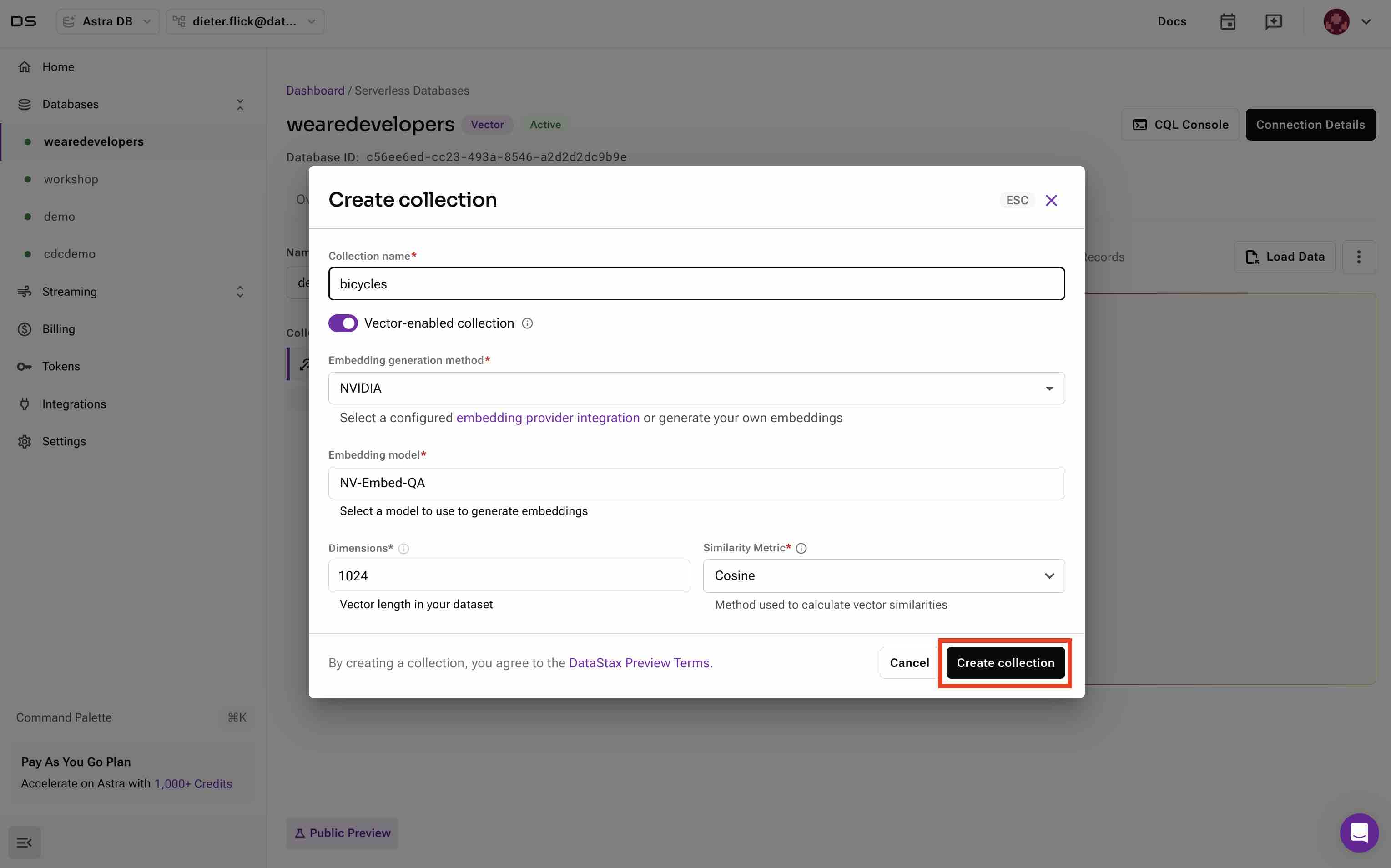
- Load the bicycle catalog data into your collection. Load bicycle_catalog_100.json and select the field
product_descriptionas the field to vectorize.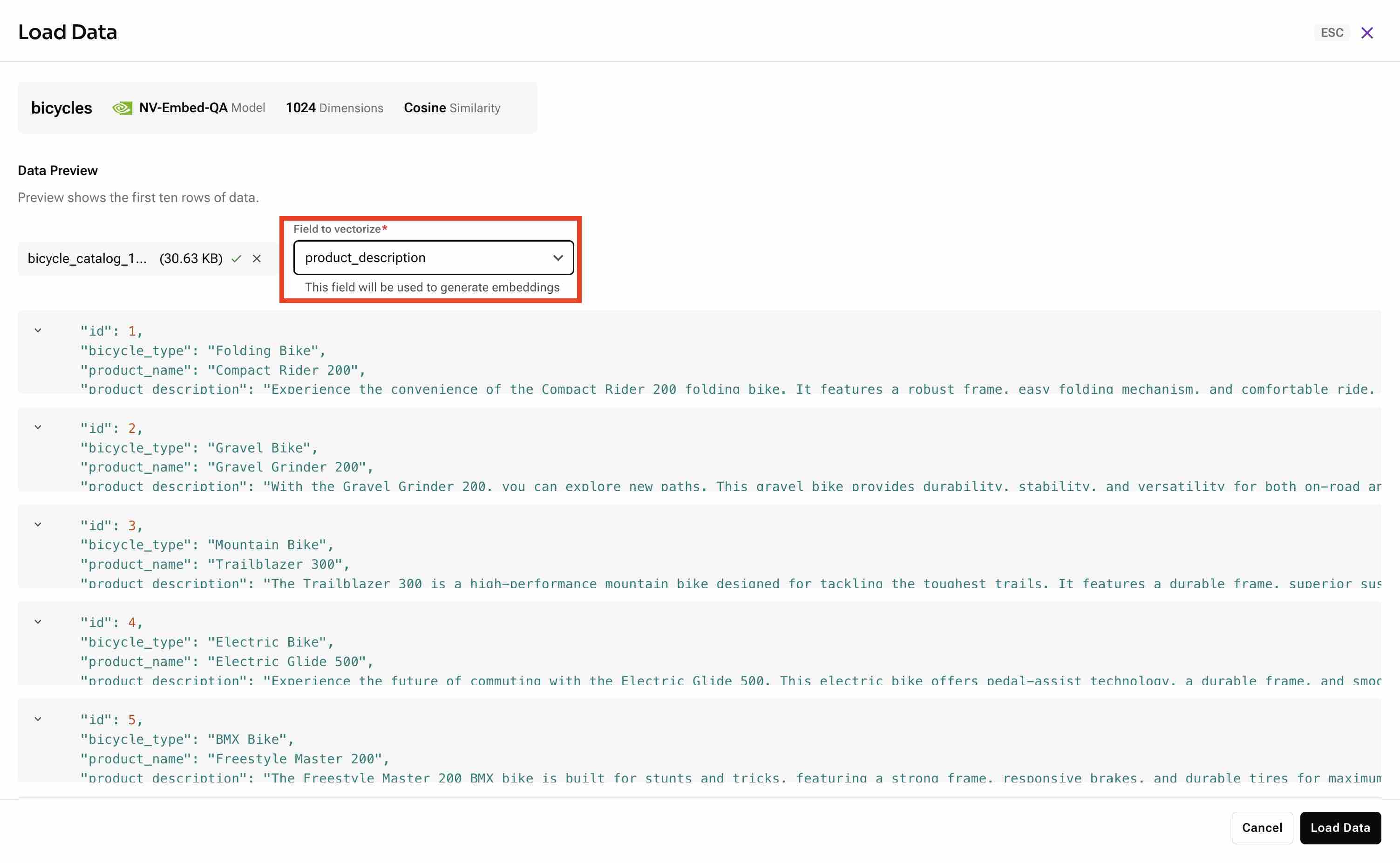
- Execute a semantic search. Insert
I need a bike that I can take with me when traveling by traininto the vector search field and hit Apply. On top of the collection data, you will see the bicycle from the catalog that is most similar to the vector search text:Compact Rider 100. This bike is from our private context, the bicycle catalog, and we will see it over the course of the other demos. This is how we retrieve our context that we later pass to the LLM to get a relevant response.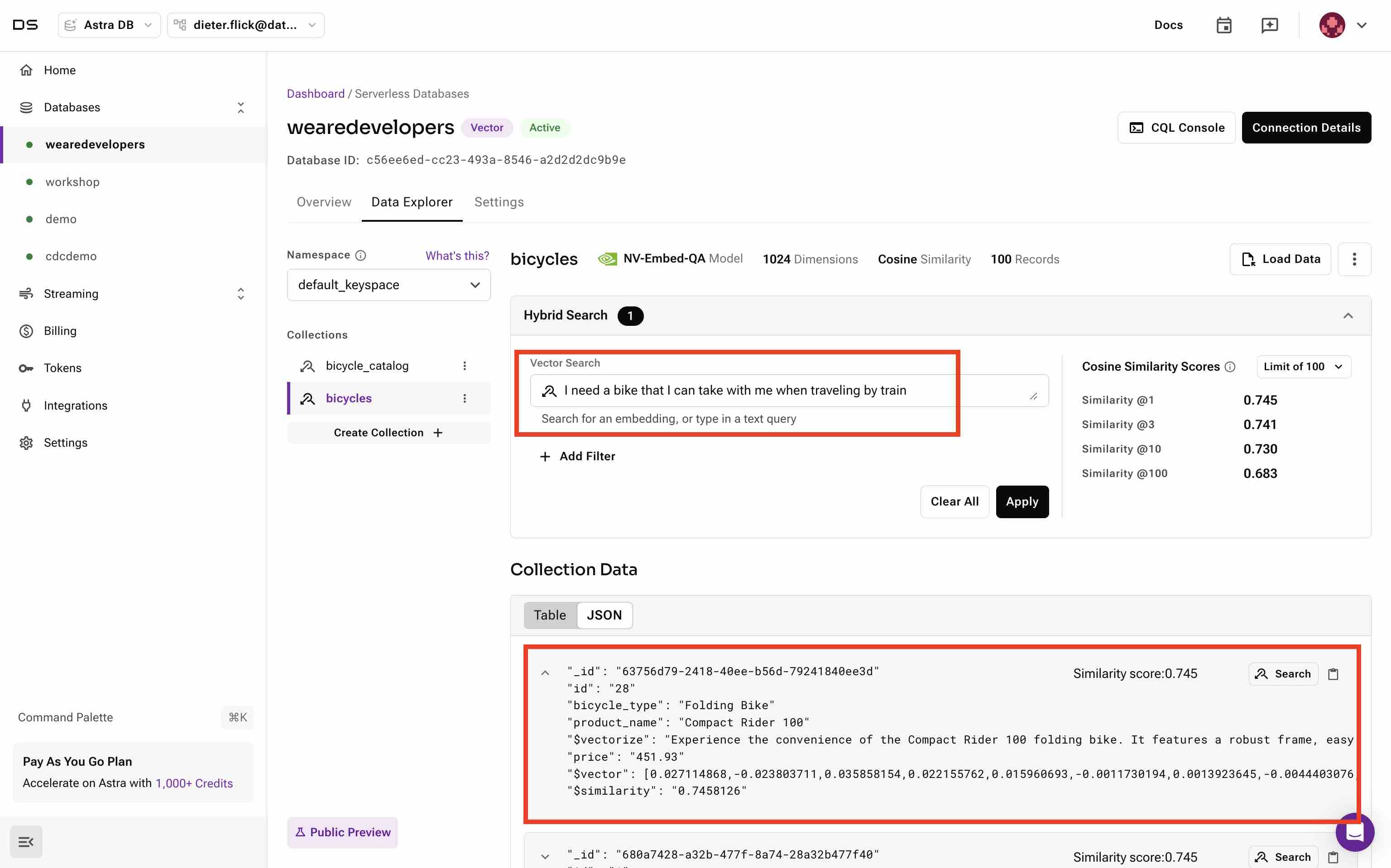
This coding demo showcases the use of RAGStack for an LLM-powered application. It also contrasts the coding approach with the no-coding approach.
- Open requirements.txt.
ragstack-aiprovides a curated list of dependencies, tested and maintained by DataStax. RAGStack includes all dependencies required to implement any kind of generative AI application with versions that are tested to work well together. This is essential for enterprise applications in production. - Open the app.py file to see the import statements for modules and classes that come with ragstack-ai.
- Follow the comments and instructions in the script to understand the implementation. There are quite a few of them. The developer needs to be familiar with their usage.
- Even this simple application requires a considerable amount of code, which takes time and is error-prone.
- Run app.py to see the RAG-based bicycle recommendation service built with RAGStack in action. Insert
I need a bike that I can take with me when traveling by traininto the input field and hit Apply. The recommendation you get is from the bicycle catalog with its description that is most similar to what was entered in the input field. Again,Compact Rider 100. This bike is from our private context, the bicycle catalog, and we will see it over the course of the other demos. There is no chance for the LLM to hallucinate as we retrieved the most similar bicycle products based on their descriptions with Astra DB vector search and passed this context to the LLM to generate a response based on this. Ensure you are within thecodingfolder.streamlit run app.py

This no-coding demo highlights the rapid development capabilities of Langflow for LLM-powered applications.
- In the Astra UI, switch to Langflow.

- Click on
Create New Project. Select theVector Store RAGtemplate.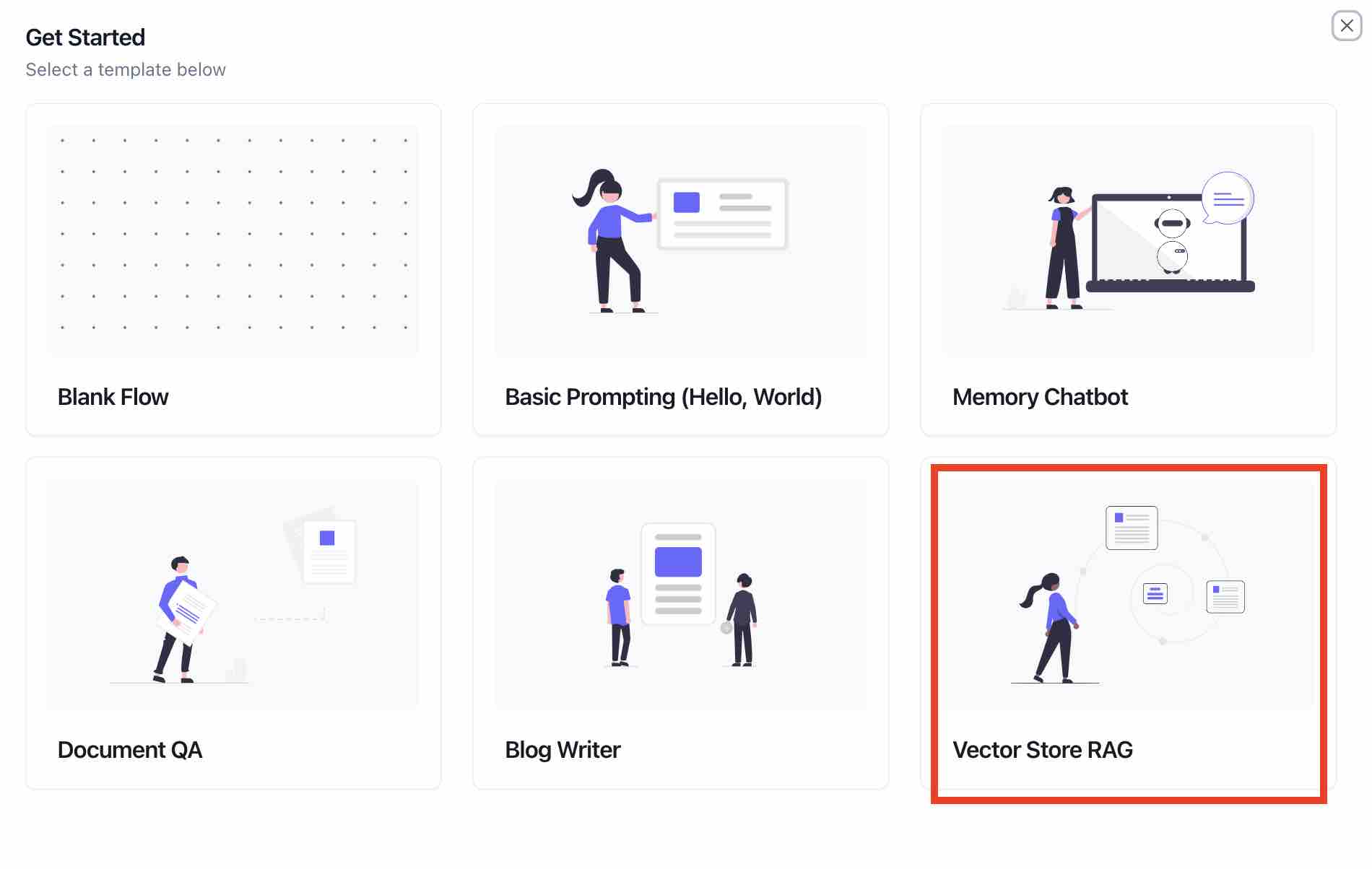
- All demos use Astra vectorize to generate embeddings. To be consistent, delete the OpenAI Embeddings component.
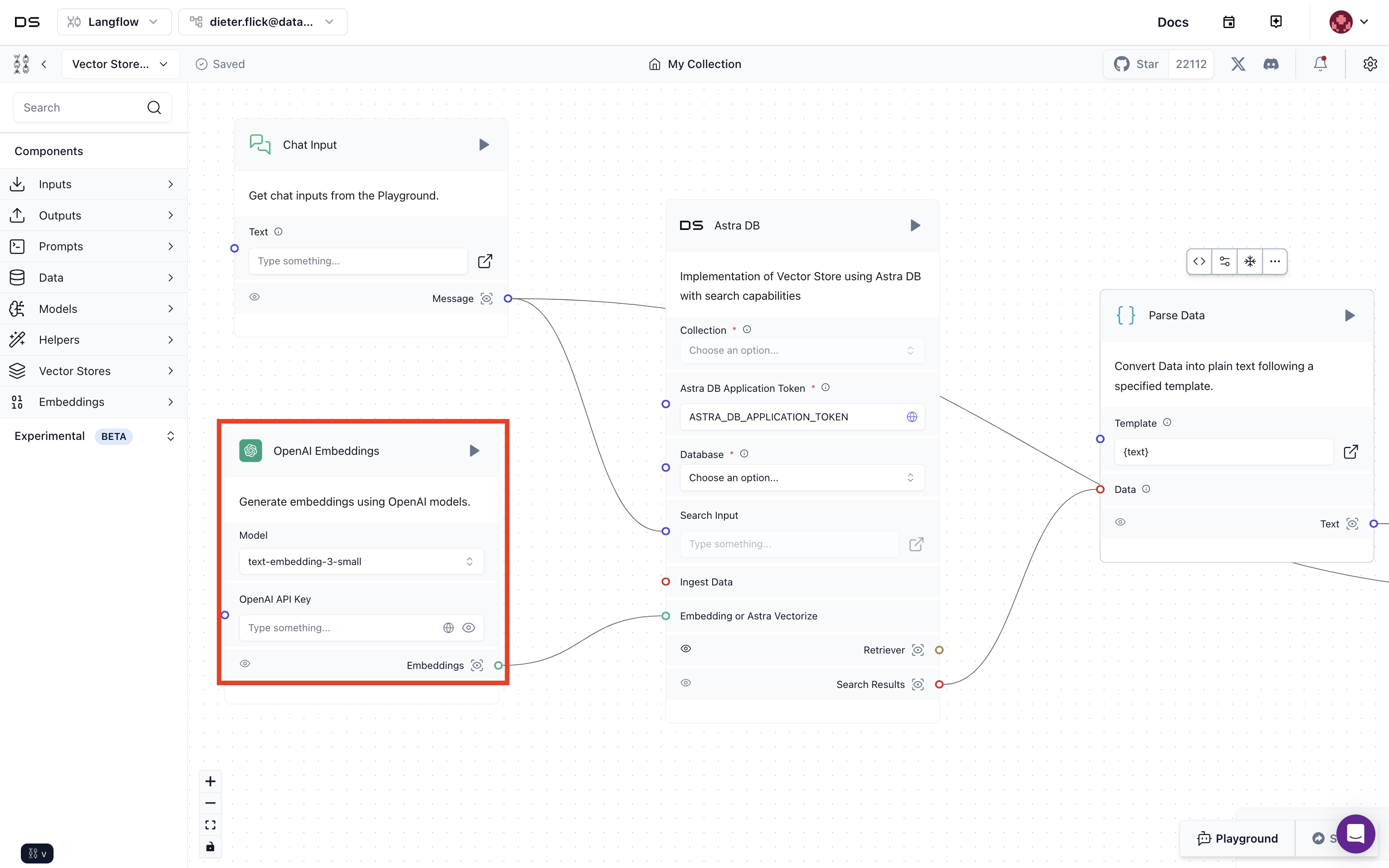
- Drag and drop the Astra vectorize component under the embeddings menu into the canvas. Choose
NVIDIAas the provider and insertNV-Embed-QAas the model. Connect the Astra Vectorize with the Astra DB component.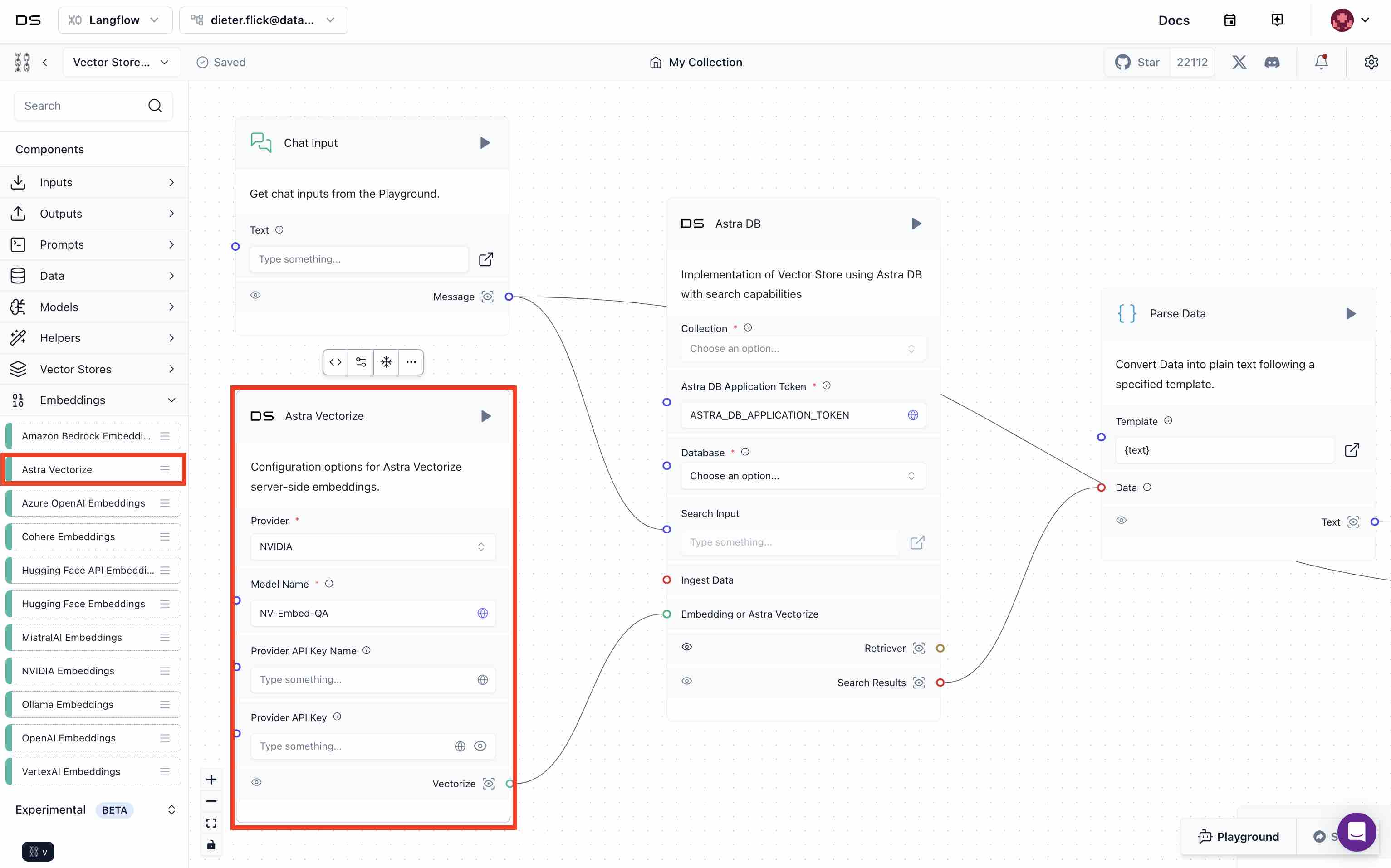
- Select
wearedevelopersunder Database andbicycle_catalogunder Collection for the Astra DB component.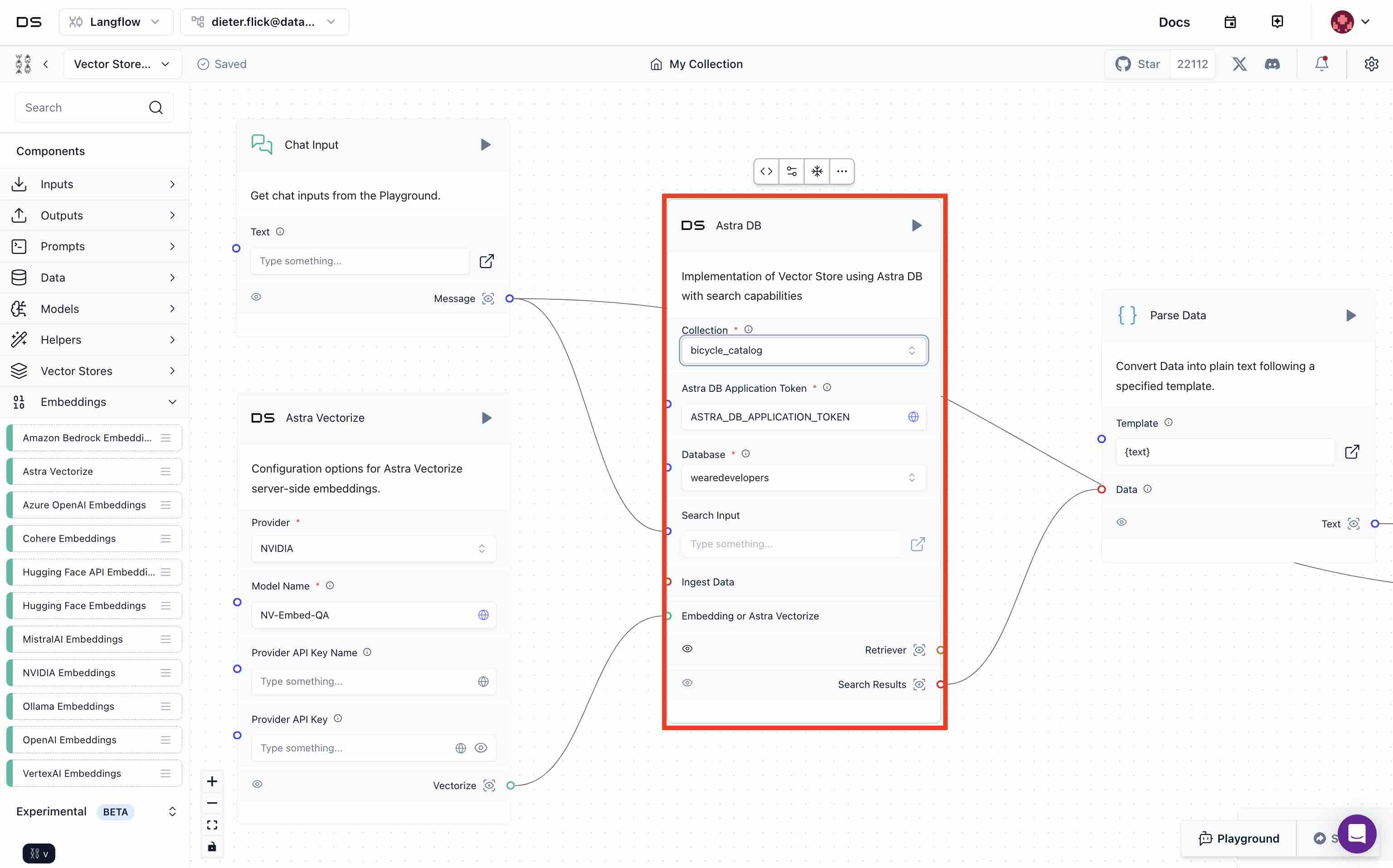
- Change the template field of the
Parse Datacomponent to{data}. This ensures all data from the retrieved documents from Astra DB goes into the context of the prompt.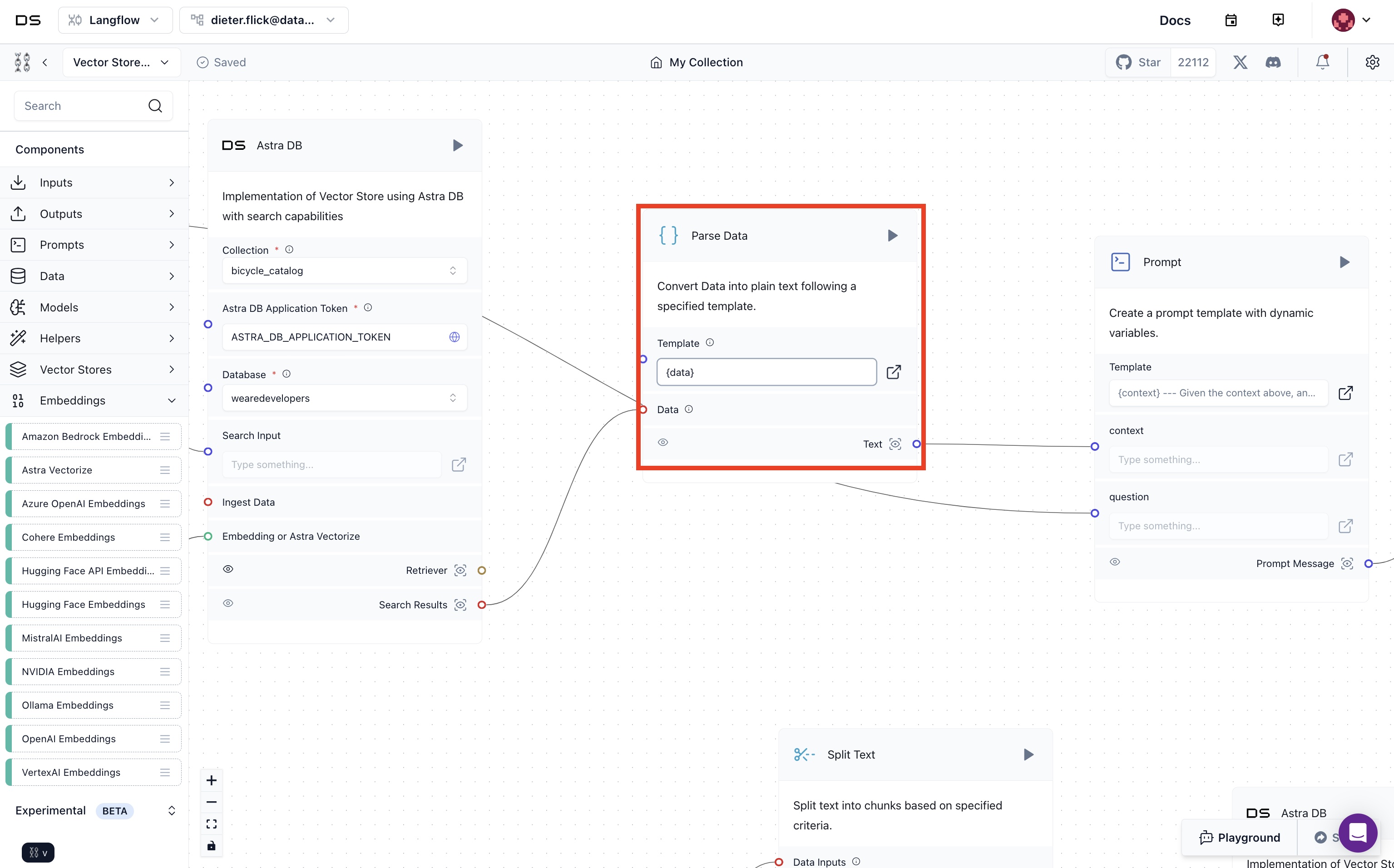
- Change the prompt template to what is used as the prompt in app.py. The prompt is where the programming of our generative AI application happens in English language.
You’re a helpful AI assistant tasked with helping users find the perfect bicycle based on their preferences and needs. You're friendly and provide extensive answers. Use bullet points to summarize your suggestions. Here's how you can assist: After gathering the user's preferences, provide at least two bicycle products that match their criteria. Use bullet points to summarize each suggestion, including key features, benefits, and price. Example: "Mountain Bike: Trailblazer 300 Durable frame with advanced suspension system Excellent traction for rugged terrain Price: $1500" "Road Bike: Speedster 200 Lightweight aerodynamic design High-performance tires for speed Price: $800" Encourage Further Questions and Offer Additional Assistance: "Feel free to ask any more questions or provide additional details if needed. I'm here to help you find the best bicycle for your needs!" CONTEXT: {context} QUESTION: {question} YOUR ANSWER:
- Provide an
OpenAI API Keyfor the OpenAI component.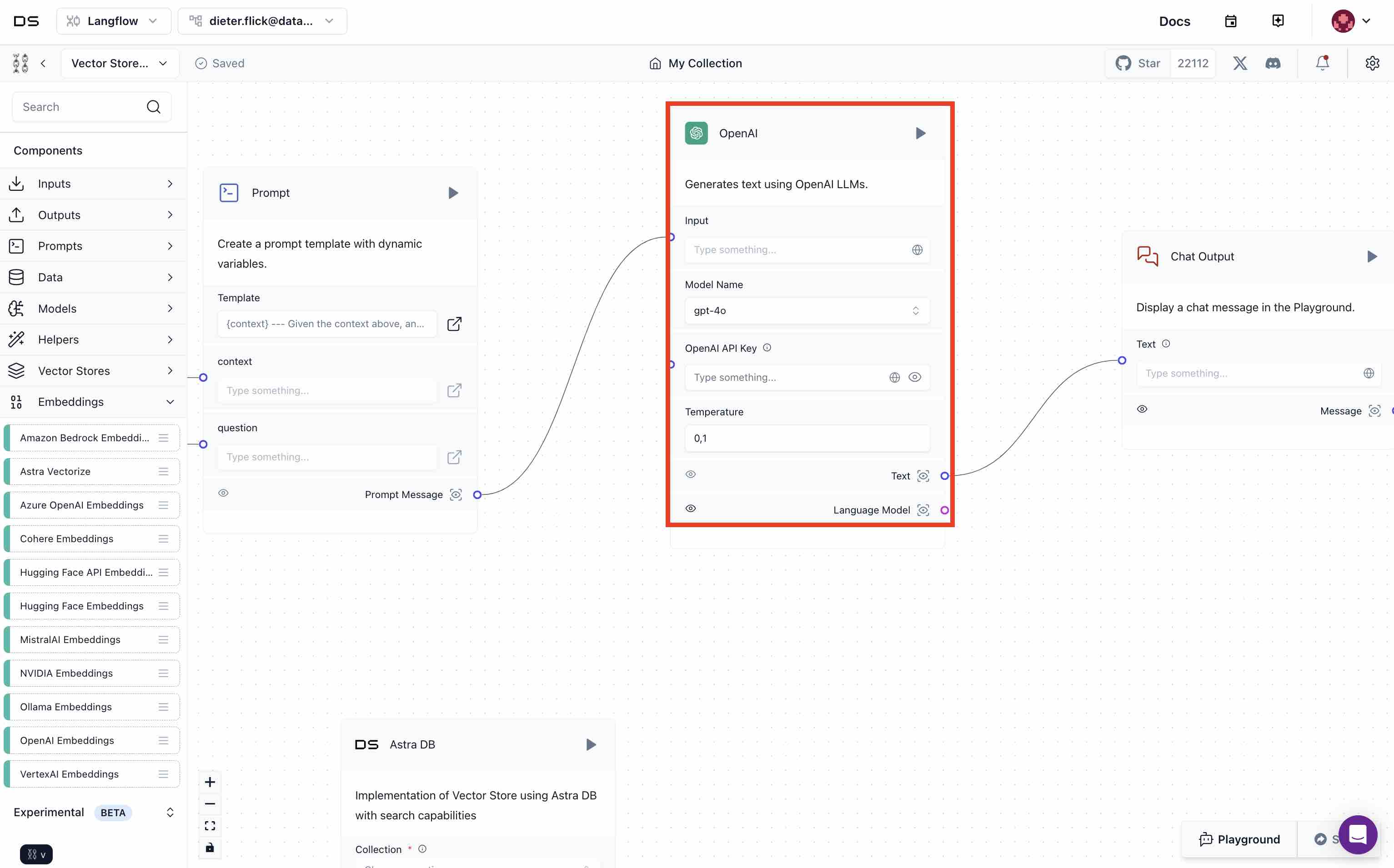
- Execute the flow by clicking
Playground.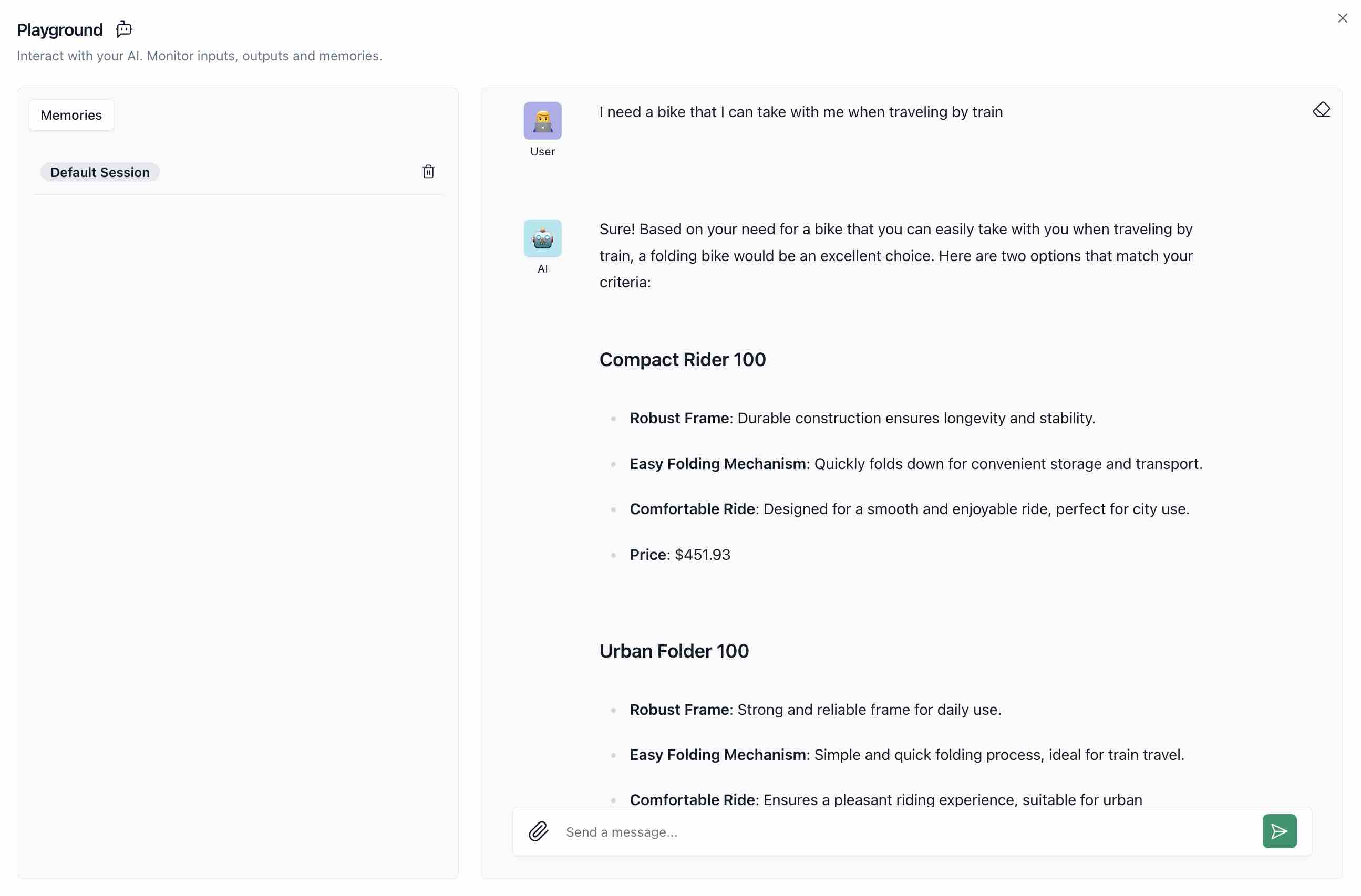
- A flow can be integrated into an application. Let's do that. First, install and run Langflow locally. Import the flow WeAreDevelopers.json in your local Langflow instance. Ensure all credentials and fields are populated as above. Click the
APIbutton. Copy the URL from theRUN cURLtab.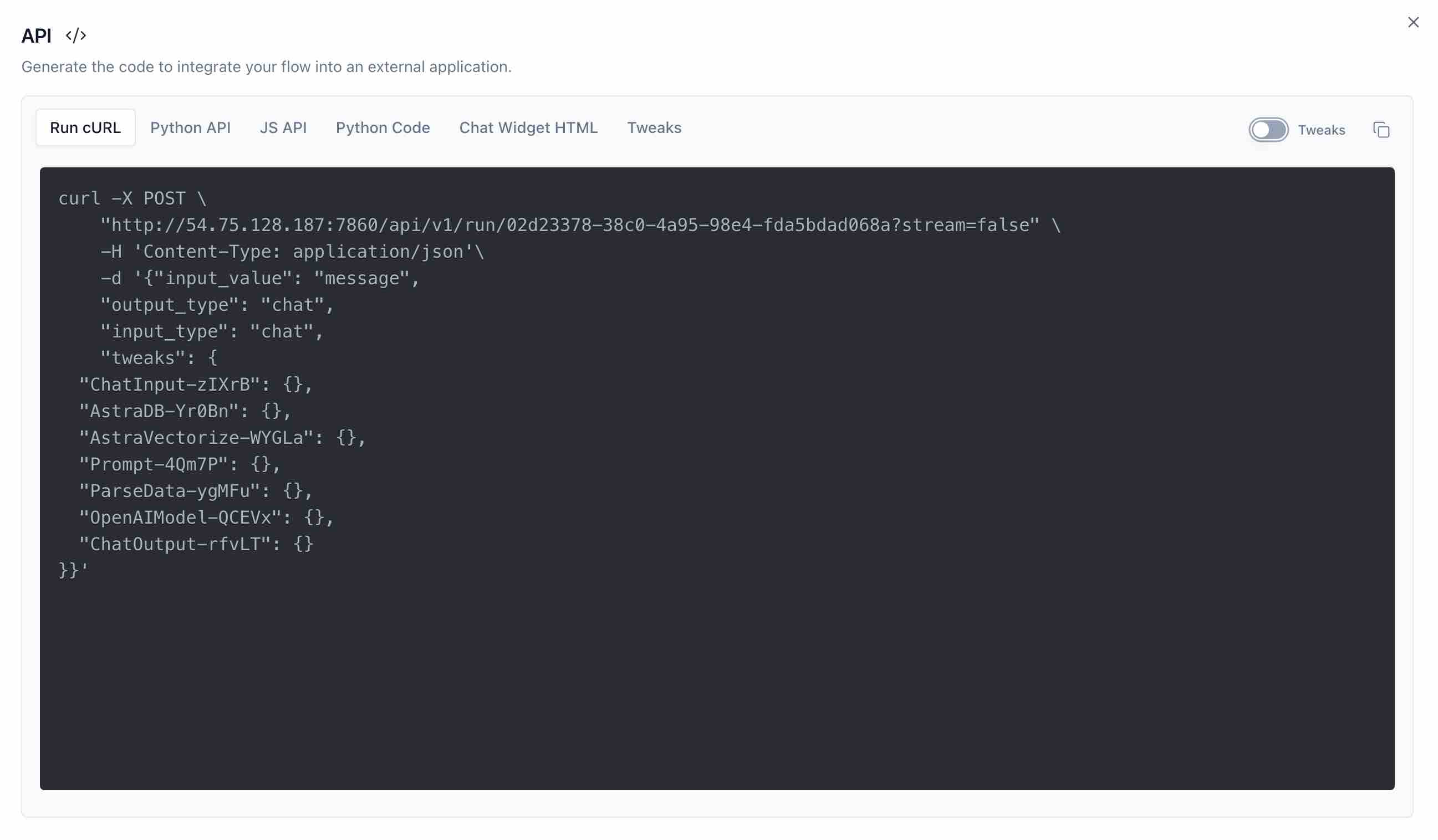
- Paste the URL you copied into app_langflow.py. There is no generative AI-related code (e.g., no Langchain modules and classes) in the code. The code is just about the UI and the integration with Langflow where the generative AI flow will be executed.
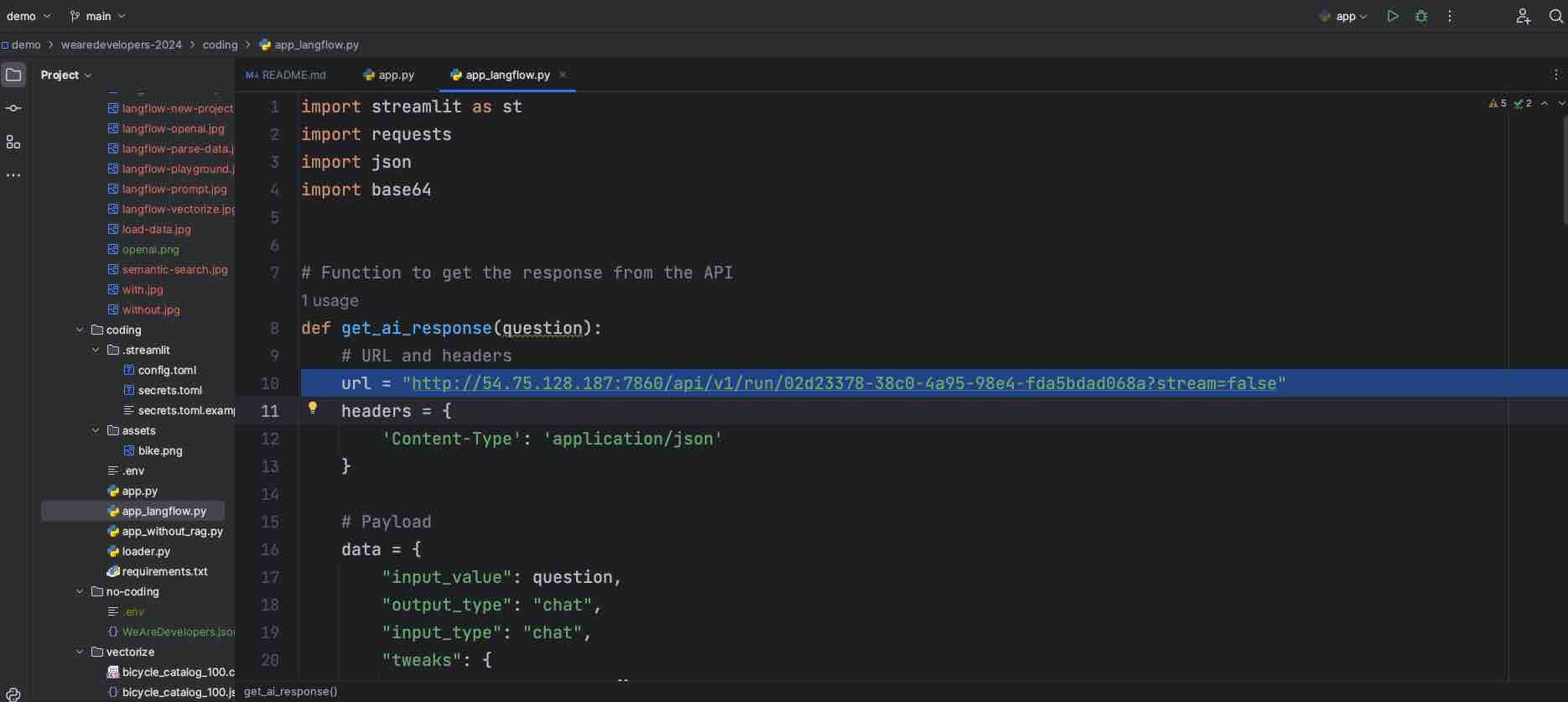
- Execute your adapted app_langflow.py application. Ensure you are within the
codingfolder.streamlit run app_langflow.py
- This time we get a Langflow-powered bicycle recommendation service but still the same recommendation based on our bicycle catalog.
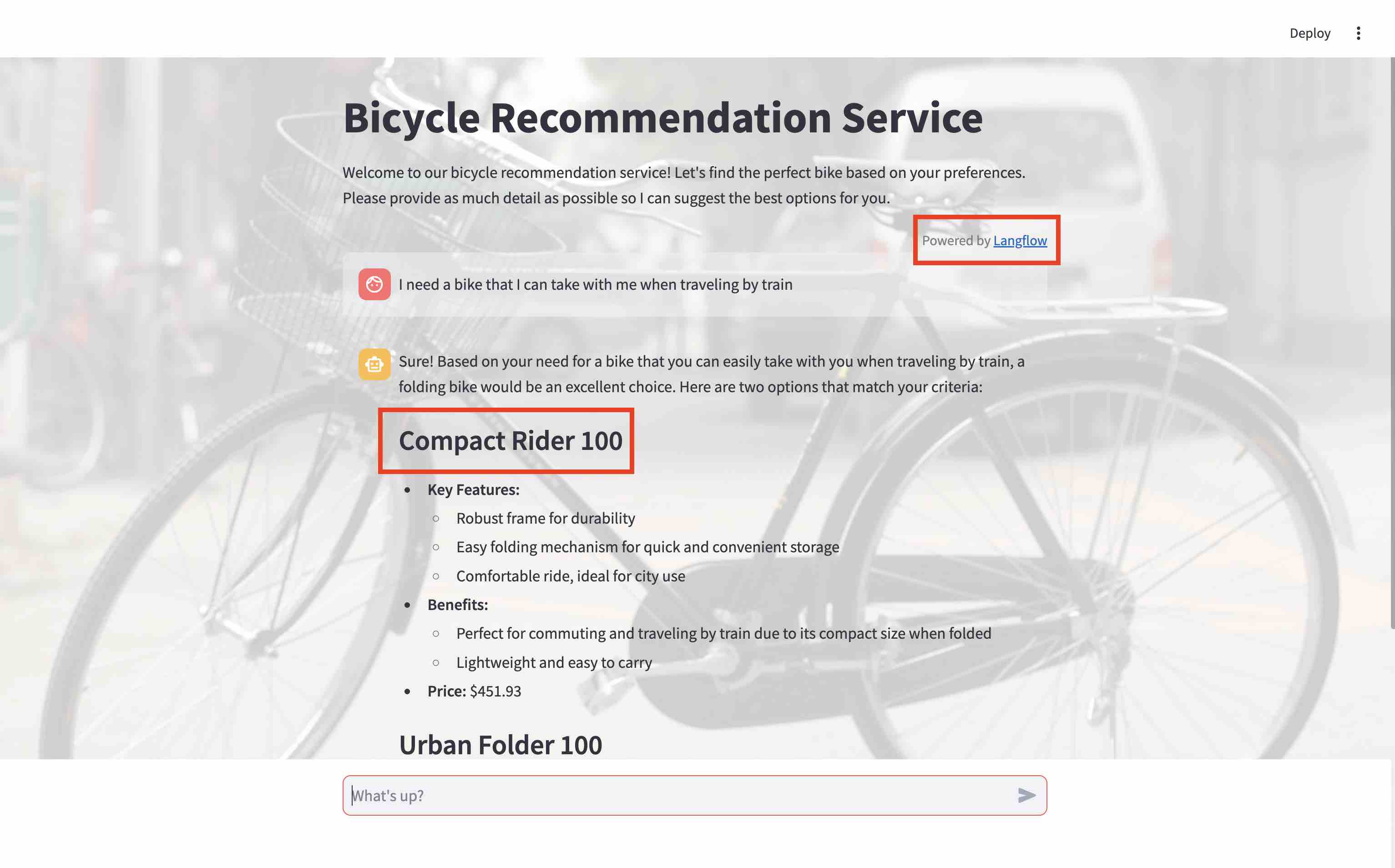
Contributions are welcome! Please read the CONTRIBUTING.md file for guidelines.
This project is licensed under the MIT License - see the LICENSE file for details.